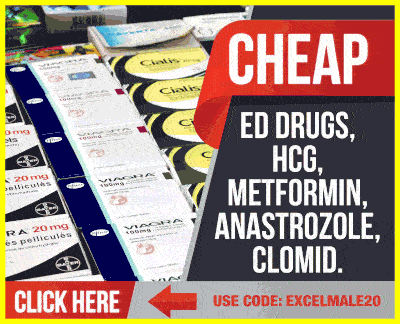Learn about atypical antipsychotics and the best strategies for using them to augment treatment for major depressive disorder (MDD) with inadequate response to initial therapy.
Defining Treatment Response in MDD
Response to treatment is categorized to establish a clear framework for understanding inadequate responses:- Nonresponse: Less than 25% improvement in symptoms on standardized scales.
- Partial or Inadequate Response: 25%-49% improvement with persistent functional impairments.
- Response: ≥50% symptom improvement but without achieving remission.
- Remission: Nearly symptom-free, with restored normal functioning.
Challenges in Achieving Remission
- Only 20%-30% of patients achieve remission with each treatment trial.
- Residual symptoms often include low mood, anxiety, fatigue, reduced libido, and sleep disturbances.
- Functional problems like work impairment, cognitive deficits, and low energy persist even in remitted patients.
Implications of Inadequate Response
Patients with insufficient symptom improvement face:- Higher relapse rates.
- More chronic episodes with shorter intervals between them.
- Lower quality of life and increased risk of morbidity and suicide.
Adjusting Treatment Strategies
Treatment regimens may need to be altered due to:- Intolerance: Side effects can compromise adherence.
- Worsening Symptoms: Early detection of inadequate response is critical.
Recommendations from Major Guidelines
- American Psychiatric Association (APA, 2019):
- After one failed monotherapy, switch to another agent with a different mechanism of action or augment with an additional medication.
- CANMAT (Canada):
- Advocates for early adjunctive treatments, particularly after the first or second inadequate response if tolerability permits.
Enhancing Quality of Life and Functional Recovery
- Quality of Life Improvements:
- Goals include re-engagement, vitality, motivation, and cognitive function.
- Persistent issues like anhedonia, low energy, or poor sleep affect life satisfaction.
- Functional Recovery:
- Key domains include family, work, self-care, and community participation.
- Functional recovery requires addressing core symptoms and fostering a sense of personal agency.
Role of Atypical Antipsychotics in Adjunctive Therapy
Overview by Dr. Leslie Citrome
I’m Dr. Leslie Citrome, Clinical Professor of Psychiatry at New York Medical College. Here, I’ll discuss FDA-approved atypical antipsychotics for adjunctive treatment in MDD:Approved Agents
- Aripiprazole (Abilify): Partial agonist at dopamine D2 and serotonin 5-HT1A receptors; initial dose 2-5 mg/day, up to 15 mg/day.
- Quetiapine Extended Release (Seroquel XR): Antagonist at D2 and 5-HT2A receptors; starting dose 50 mg/day, target 150-300 mg/day.
- Olanzapine-Fluoxetine Combination (Symbyax): Effective in treatment-resistant cases. Initial dose 6 mg/25 mg, up to 12 mg/50 mg.
- Brexpiprazole (Rexulti): Similar to aripiprazole but with a gentler side effect profile; initial dose 0.5-1 mg/day, max 3 mg/day.
- Cariprazine (Vraylar): Partial agonist at D2, D3 (high affinity), and 5-HT1A receptors; starting dose 1.5 mg/day, max 3 mg/day.
Considerations for Use
- Effectiveness: Enhances response rates compared to antidepressants alone.
- Side Effects: Sedation, weight gain, restlessness, and metabolic concerns vary across agents.
Emerging Treatments: Lumateperone
Lumateperone (Caplyta), a novel adjunctive treatment, has shown promise in late-stage trials:- Potent 5-HT2A antagonist with indirect modulation of AMPA and NMDA pathways.
- Exhibits significant early symptom improvement with minimal metabolic side effects.
Individualizing Adjunctive Therapies
Insights by Dr. Greg Mattingly
I’m Dr. Greg Mattingly, Associate Clinical Professor at Washington University School of Medicine. Let’s explore strategies for tailoring adjunctive treatment:- Retaining Benefits: Maintain gains from the primary antidepressant while boosting effectiveness.
- Avoiding Withdrawal Symptoms: Gradual adjustments to minimize discontinuation effects.
- Patient-Centric Approach: Address residual symptoms (e.g., anhedonia, agitation) with evidence-based multimodal treatments.
Measurement-Based Care: A Critical Component
Utilizing tools like the PHQ-9, GAD-7, and quality-of-life scales ensures:- Better Symptom Tracking: Early detection of residual issues.
- Improved Adherence: Patients feel engaged in their treatment.
- Higher Remission Rates: Measured outcomes inform precise therapeutic adjustments.
Conclusion
Adjunctive therapies play a vital role in improving outcomes for patients with MDD. By leveraging evidence-based strategies, measuring patient outcomes, and considering individual preferences, clinicians can optimize treatments for better symptom control, quality of life, and functional recovery. Thank you for joining this discussion.
Last edited by a moderator:











